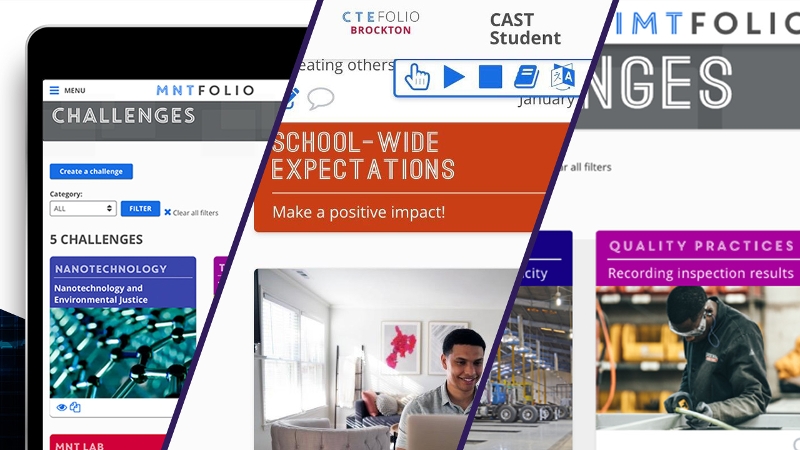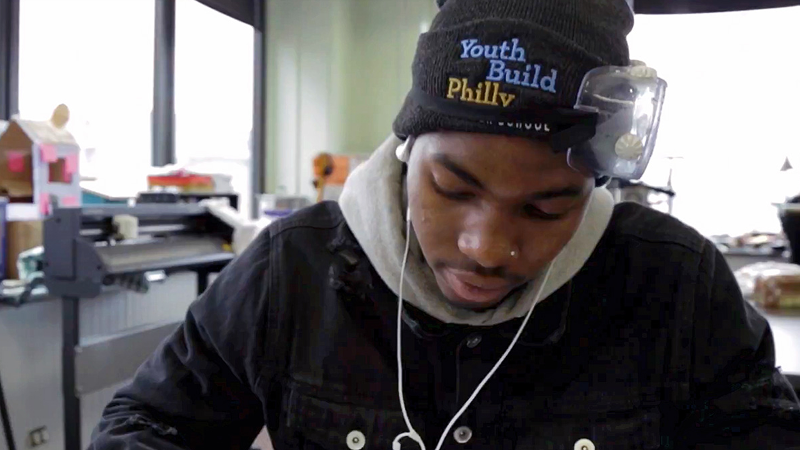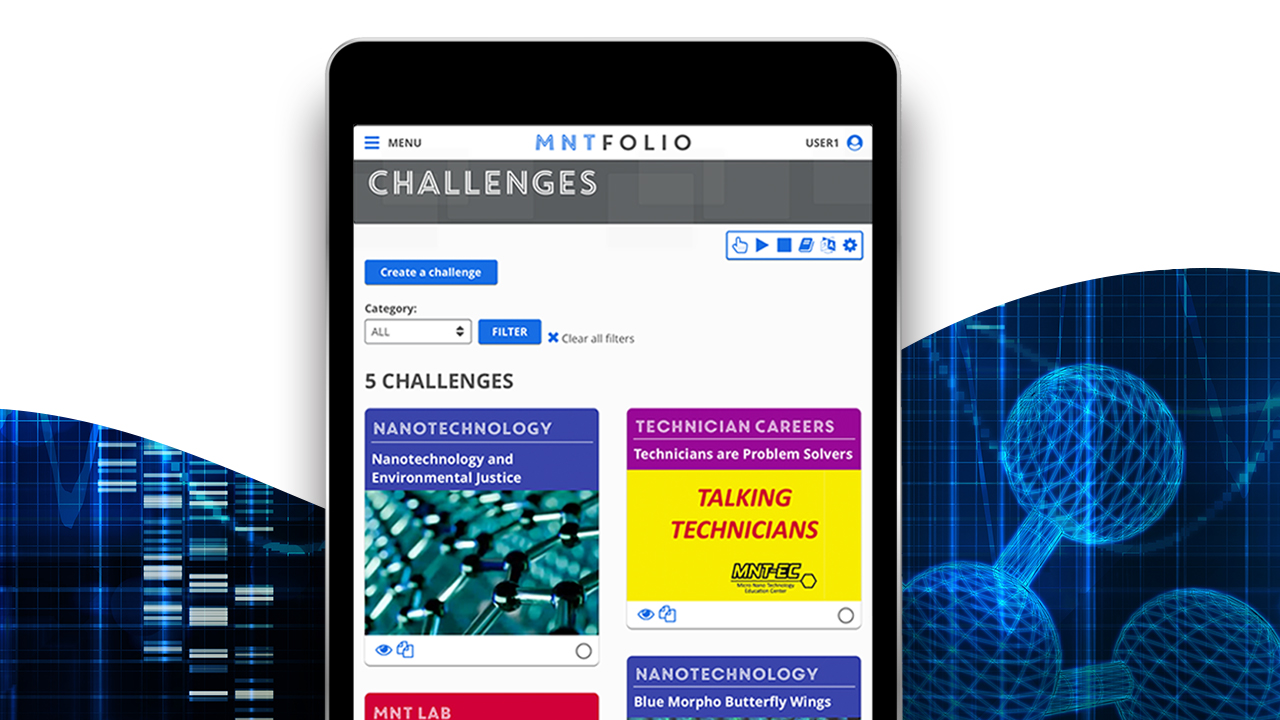One of the most noticeable trends in the global economy today is a shortage of skilled workers in job fields that require knowledge and skills in science, technology, engineering, and mathematics (STEM). The US-based National Association of Manufacturing and Deloitte, a consultancy firm, estimate that by 2025 3.5 million new STEM jobs will open up in the United States—with more than 2 million jobs going unfilled due to a lack of qualified candidates.
At the same time, YouthBuild USA, a nonprofit education organization, estimates that nearly 5 million 16–24-year-olds who are neither employed nor in school could fill many of those open jobs with the right training, guidance, and opportunity. These “opportunity youth,” as recognized by YouthBuild, could play an essential role in America’s economy and civic life.
The challenge lies in connecting these youth to career opportunities. CAST is leading efforts to develop a learning tool that can help do exactly that. With funding from the National Science Foundation (NSF), CAST has partnered with YouthBuild USA and the University of Massachusetts, Amherst on a trailblazing project: The Career Exploration and Readiness Environment for Science, Technology, Engineering and Mathematics, or CEE-STEM.
At the project’s center is STEMfolio, a mobile-first e-portfolio platform where learners can explore STEM careers, engage with their instructors, and demonstrate the knowledge and skills they are learning in pre-apprenticeship and career training programs. This offers job-seeking young people much more than a traditional resume. With STEMfolio, opportunity youth can show potential employers what they can do and what they know.

“We worked with students and teachers in different YouthBuild sites to develop STEMfolio,” says Tracey E. Hall, Senior Research Scientist at CAST. “The intent of the study was to determine whether, by using STEMfolio, young people were more engaged, more motivated, and better able to demonstrate their understanding of the skills they were learning, both in the academic and the training environment.”
STEMfolio was made with Universal Design for Learning (UDL) features in mind. The UDL framework for educational design acknowledges that learners may demonstrate knowledge and competencies in different ways. STEMfolio gives them options that best fit their learning needs and the situations they are in.
CAST researchers worked collaboratively with YouthBuild learners to understand and develop the core user-experience that honors and accommodates the variability of learners.

“The idea is they earn their GED or High School Equivalency Test and also pursue a career pathway, like certified nursing assistant, construction, and different trades,” says Alison Driscoll, CEE-STEM Project Manager at CAST. “They use STEMfolio to document the competencies they’re building, and develop a portfolio they can share with a potential employer or a college counselor at the end of their YouthBuild experience.”
STEMfolio Allows Students to Learn on Their Terms

“A large number of opportunity youth come from very challenging situations, including low income communities where transportation, child care, and other social supports are in short supply,” says Sam Catherine Johnston, CAST’s Director of Postsecondary and Workforce Development. “Why would we not facilitate their learning development and their knowledge development, and provide access to meaningful education and employment opportunities when it’s not that hard to do? It’s not that hard to give people support—the right kind of support—to build their skills and understanding.”
Opportunity youth often lack access to laptops or tablets but most students have a smartphone. To overcome technology-based barriers, CAST developed STEMfolio as a mobile-first platform, though the tool also seamlessly adapts to any digital medium. After logging in, learners can pursue a variety of instructor-led challenges. STEMfolio was designed around the UDL framework, so students can demonstrate their competencies using the medium that best fits their individual learning preferences.
“The structure is really simple and flexible,” Driscoll says. “Students can respond with texts, photos, or upload a selfie video of them completing a task—it’s almost like the structure of an Instagram post. The idea of alternative forms of assessment allows students in this setting to shine in ways they haven’t in typical school settings.”
After completing a challenge in STEMfolio, learners tag the core competencies that tie back to the challenge as a way to further show understanding of the task, similar to tagging a blog post or adding a social media hashtag.
“It’s very mastery-oriented, and the supports we put in place, in terms of things like text-to-speech and speech-to-text to show different evidence, remove some of the barriers that are very often embedded in traditional assessments,” Johnston says.
On the backend, the fully customizable tool gives instructors the freedom to curate and adapt challenges to fit the topic of instruction. Instructors are encouraged to upload case studies and testimonials from successful STEM graduates to help learners connect core competencies to real-world applications.
As a YouthBuild Alumnus, Irvin fought through adversity to become a National Forest firefighter. This video and others like it are part of the STEMfolio tool.
“We created short videos called STEM Voices, and they’re video-based stories of people demonstrating STEM skills and also talking about how they came to using STEM in their professional lives,” Johnston says. “Many of them were YouthBuild participants or alumni, and their answers were nothing short of brilliant. The way they use math, science, technology, or engineering in applied learning was what probably any teacher would dream of.”
Firefighter
As a YouthBuild Alumnus, Irvin fought through adversity to become a National Forest firefighter. This video and others like it are part of the STEMfolio tool.
Just as a graphic designer builds a portfolio to showcase their pieces, students using STEMfolio can document their knowledge and skills. This tangible portfolio can then be used in a job interview to present evidence of their competencies and clearly articulate their acquired skills.
“What we often see is you have to fill out these forms that don’t necessarily make sense, and then you have to go in and explain yourself—it’s very, very difficult,” says Hall. “What we’re trying to do by identifying competencies, by responding to challenges in these various ways, is to help students develop that vocabulary. To be able to talk about themselves and describe and share their understanding, as it applies to the job they’re applying for.”
As it turns out, for some prospective employers, actions speak even louder than words.
“One of the women who works at the industrial manufacturing apprenticeship told me, ‘I don’t want someone to write a paragraph about how to use a forklift. I want them to show me how to use a forklift,’” Driscoll says.
Adapting STEMfolio for the Trades and Beyond
After taking STEMfolio to the YouthBuild sites, Johnston says the CAST researchers realized the tool could help students master subjects beyond STEM, especially in project-based and hands-on learning fields such as in technical and trade schools. Because they intentionally developed the tool iteratively with YouthBuild, they could easily spin off multiple prototypes.
The customization started with a U.S. Department of Labor grant, called The Apprenticeship Inclusion Models — a grant meant to create small pilot studies to explore better approaches to including individuals with disabilities and apprenticeship pathways, says Johnston.
The researchers used the STEMfolio tool in combination with a pre-apprenticeship program called The Wisconsin Regional Training Partnership, and in collaboration with Jobs for the Future. The goal of the pilot model was to show a promising approach for pre-apprentices with barriers to employment to demonstrate their relevant skills and competencies for entry-level employment in their principal field.

Johnston says customizations of the tool include the Industrial Manufacturing Technician folio (IMTfolio) and the Career and Technical Education folio (CTEfolio), which they developed for CTE high schools. Currently, they’re developing a Micro/Nanotechnology folio (MNTfolio) to support undergraduate research in community colleges and four-year institutions.
“In the CTE and manufacturing programs, the students have to go through these stages of apprenticeship, and there are several aspects of the program where they need to document the mastery of specific skills,” says Dr.Hall. “If they use the Efolio like we’ve created, they have images of their competencies, and it’s a way to illustrate to an employer, Yep, it’s right here.”
The CAST team believes their tool could also help incarcerated individuals build a portfolio of job-ready skills, which not only increases their chances of gaining meaningful employment after release, but removes barriers to recidivism.
“We haven’t implemented it yet in the correctional system, but there’s a real sense that especially if you started to build things prior to release and then kept that portfolio afterward, it would provide a good way to document skills and open up a conversation with an employer, where they could actually look at evidence of skills, and hopefully undo some stereotypes,” Johnston says.
CAST Plans Future Iterations of Efolio
Although the COVID-19 pandemic hampered studies of the tool, CAST researchers have applied for grants to support in-service professional development for case managers of individuals with mental health-related challenges, as well as the Community Corrections program in New Hampshire for supporting inmates’ reentry and employment.
“And we’ve explored vocational rehab for individuals with disabilities that face barriers to employment,” says Johnston. “It’s raised a lot of good ideas, and I think there’s interest in these contexts where people are really engaged in real-world skill development.”
Story by Red Pen Content Creation.
Interested in partnering with us?
Our work, like the projects focused on Efolio, depends on people like you. We partner with schools, districts, and organizations to build new tools, customize existing tools, and develop resources to ensure the promise of accessible, inclusive, rigorous, and dynamic lifelong learning.
Learn more about our research opportunities
Explore our related projects

CEE-STEM: Exploring STEM Careers with Opportunity Youth
Our STEMfolio tool leverages mobile technologies and competency-based progress monitoring to help youth develop STEM interests and skills.

CTEfolio: Supporting Hands-on Learning in a Remote Environment
Bringing our e-portfolio work into CTE programs so students can show what they know in new ways.

MNTfolio: Customizing e-Portfolios for Undergraduate Research
Our e-portfolio is helping develop research skills in undergraduate micro nano technology researchers.
